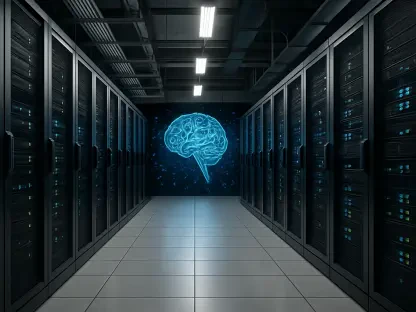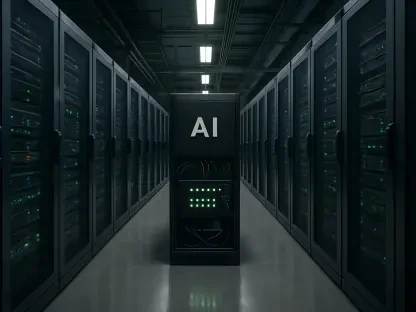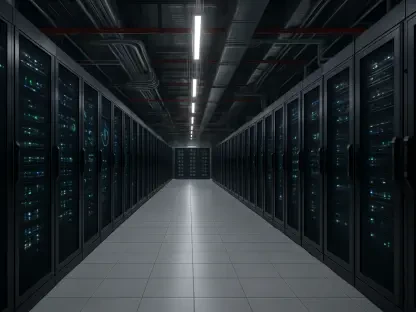As we dive into the rapidly evolving world of AI and enterprise transformation, I’m thrilled to sit down with Matilda Bailey, a renowned networking specialist with deep expertise in cutting-edge technologies like cellular, wireless, and next-gen solutions. With her finger on the pulse of IT innovation, Matilda offers invaluable insights into how CIOs can navigate the complex challenge of closing the IT workforce skills gap in an AI-first organization. In this conversation, we explore the strategic importance of adopting an AI-first mindset, the hurdles in upskilling IT teams, and practical approaches to building a future-ready workforce.
Can you share your perspective on what it means to be an AI-first organization, and why it’s such a critical shift for companies right now?
An AI-first organization, to me, is one that prioritizes AI as a core driver of its strategy, operations, and innovation. It’s about embedding AI into every layer of the business to maximize efficiency, uncover insights, and stay competitive. This shift is critical today because technologies like generative AI are moving at lightning speed. Companies that don’t adapt risk falling behind on productivity and missing out on the transformative value AI can bring. It’s not just about adopting tools; it’s about rethinking how work gets done and ensuring your workforce is equipped to lead that change.
What do you see as the biggest obstacles CIOs face when trying to close the skills gap in their IT teams for AI technologies?
One of the biggest hurdles is the sheer pace of AI evolution. IT teams often lack the specialized skills needed for things like agentic AI or data privacy compliance, and the learning curve can be steep. On top of that, there’s a scarcity of top-tier AI talent in the market, and hiring externally can be incredibly expensive. CIOs also grapple with cultural resistance—some team members may fear AI will replace their roles rather than enhance them. Balancing these technical and human challenges while aligning with business goals is no easy task.
How can CIOs manage the challenge of hiring AI talent when costs are high and skilled professionals are hard to find?
CIOs need to think beyond external hiring and focus on cultivating talent from within. Investing in upskilling programs for existing employees can be more cost-effective and builds institutional knowledge that new hires might lack. Partnering with learning platforms or offering certifications in AI tools and practices can help. It’s also about creating a culture of continuous learning where employees see growth as part of their role. This approach not only addresses the cost issue but also fosters loyalty and resilience in the workforce.
What are some effective ways you’ve seen CIOs build AI skills within their current teams instead of relying on external hires?
I’ve seen success with tailored training programs that focus on specific AI competencies relevant to the company’s goals. For example, some organizations run internal workshops or bring in experts for hands-on sessions around AI tools and data handling. Another effective strategy is creating mentorship opportunities where employees with emerging AI skills guide their peers. Gamifying learning—through challenges or rewards for completing certifications—can also boost engagement. These methods tap into the potential of the existing team and make skill-building feel like a shared journey.
Can you walk us through what a formal evaluation of AI readiness looks like for IT employees in practice?
A formal evaluation starts with a comprehensive assessment of the current skills across the IT team. This means looking at technical abilities, like proficiency with AI tools, as well as soft skills, such as adaptability, and cognitive skills, like problem-solving. CIOs can use surveys, performance reviews, and even practical tests to gauge where employees stand. From there, it’s about mapping these findings against the skills needed for an AI-first future and identifying gaps. The process should be transparent, with clear feedback to employees about where they are and what they need to work on.
How can CIOs distinguish between required skills and desired skills when preparing their teams for an AI-first environment?
Required skills are the non-negotiable ones—think of them as the baseline for functioning in an AI-driven organization. For instance, understanding data privacy rules or using approved AI tools effectively are must-haves. Desired skills, on the other hand, are the extras that can elevate performance, like advanced data analysis or creative problem-solving with AI. While required skills ensure compliance and basic capability, desired skills add value by enabling innovation and better outcomes. CIOs need to prioritize both but focus first on getting everyone up to the required level.
The idea of phasing out outdated skills can be tricky. How should CIOs decide which skills no longer serve an AI-first organization?
It’s about relevance and impact. CIOs should evaluate skills based on whether they align with current and future AI-driven goals. For example, legacy systems knowledge might be less useful if the company is moving to cloud-based AI solutions. They can use data from project outcomes or industry trends to spot skills that are holding back progress. It’s also helpful to involve team leads in these discussions to get a ground-level perspective. The key is to make decisions based on strategy, not sentiment, while ensuring employees understand the ‘why’ behind the shift.
How can CIOs communicate the need to move away from outdated skills without creating pushback from their teams?
Transparency and empathy are crucial. CIOs should frame the conversation around growth, not loss. Explain how the industry is evolving and why certain skills are becoming less relevant, while highlighting the new opportunities that come with learning AI-related competencies. Offering support—like training programs or transition plans—shows employees they’re not being left behind. Regular town halls or one-on-one check-ins can help address concerns and build trust, ensuring the team sees this as a collective step forward.
What does a well-designed AI skills roadmap look like for IT teams, and why is transparency so important in this process?
A good AI skills roadmap outlines clear milestones for skill development, tailored to different roles within IT. It identifies critical competencies—like data handling or AI tool usage—and sets timelines for training and assessment. It should also align with the company’s broader objectives, like faster product launches or better customer insights. Transparency matters because it helps employees understand what’s expected of them and why. When they see the bigger picture, they’re more likely to buy in and feel motivated to upskill rather than resistant to change.
Looking ahead, what’s your forecast for the role of AI skills in shaping the future of IT workforces over the next decade?
I believe AI skills will become the backbone of IT workforces in the coming decade. We’re already seeing AI democratize access to technology and transform how teams operate, and this will only accelerate. Roles will increasingly blend technical expertise with strategic thinking—IT professionals won’t just manage systems but will drive innovation through AI insights. Continuous learning will be non-negotiable, and organizations that invest in upskilling now will have a massive edge. I expect we’ll see AI literacy become as fundamental as basic computer skills are today, reshaping job descriptions and workplace dynamics entirely.









